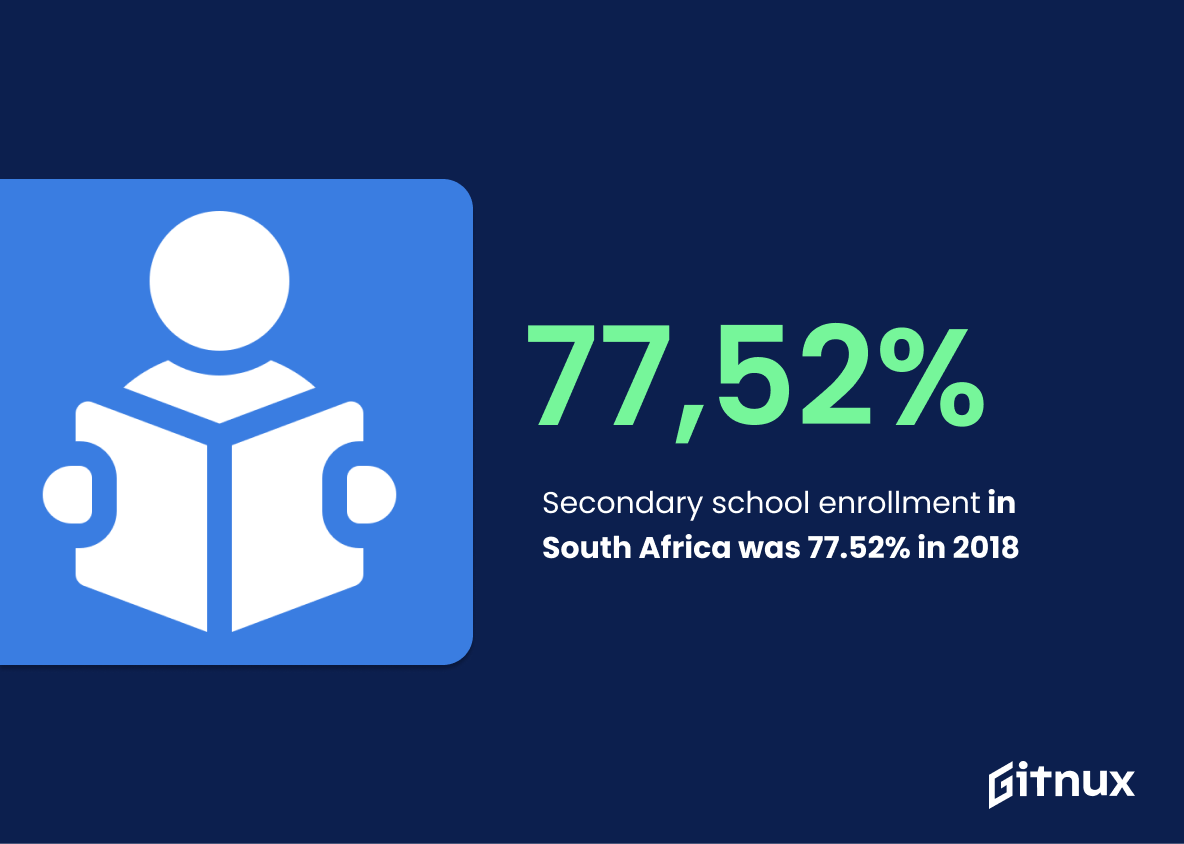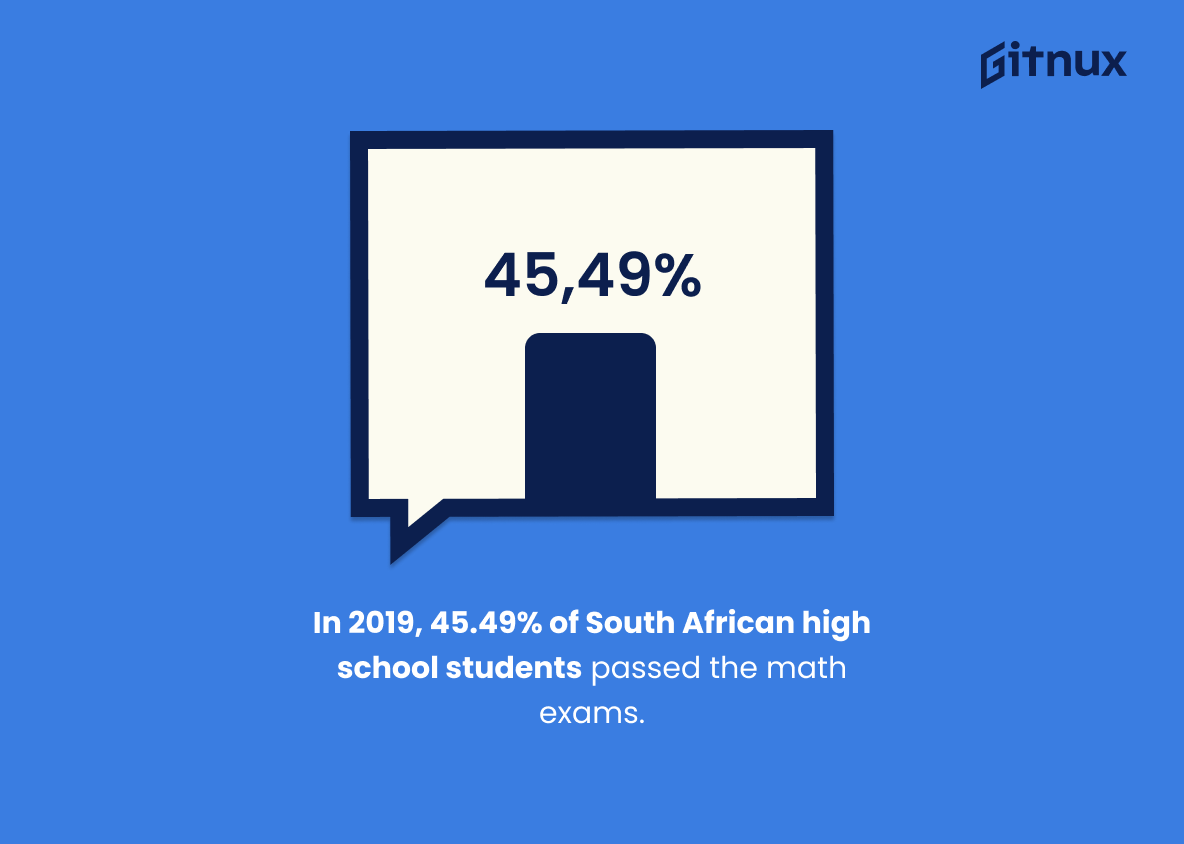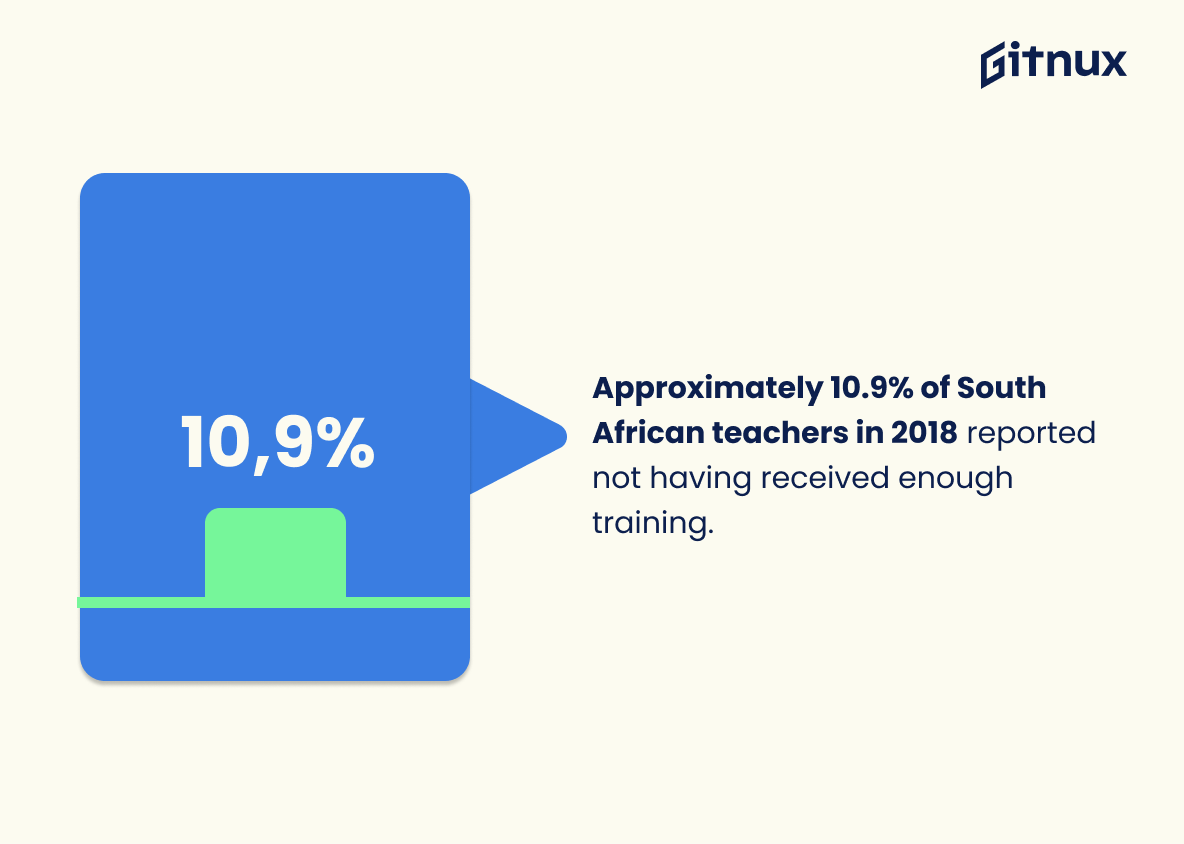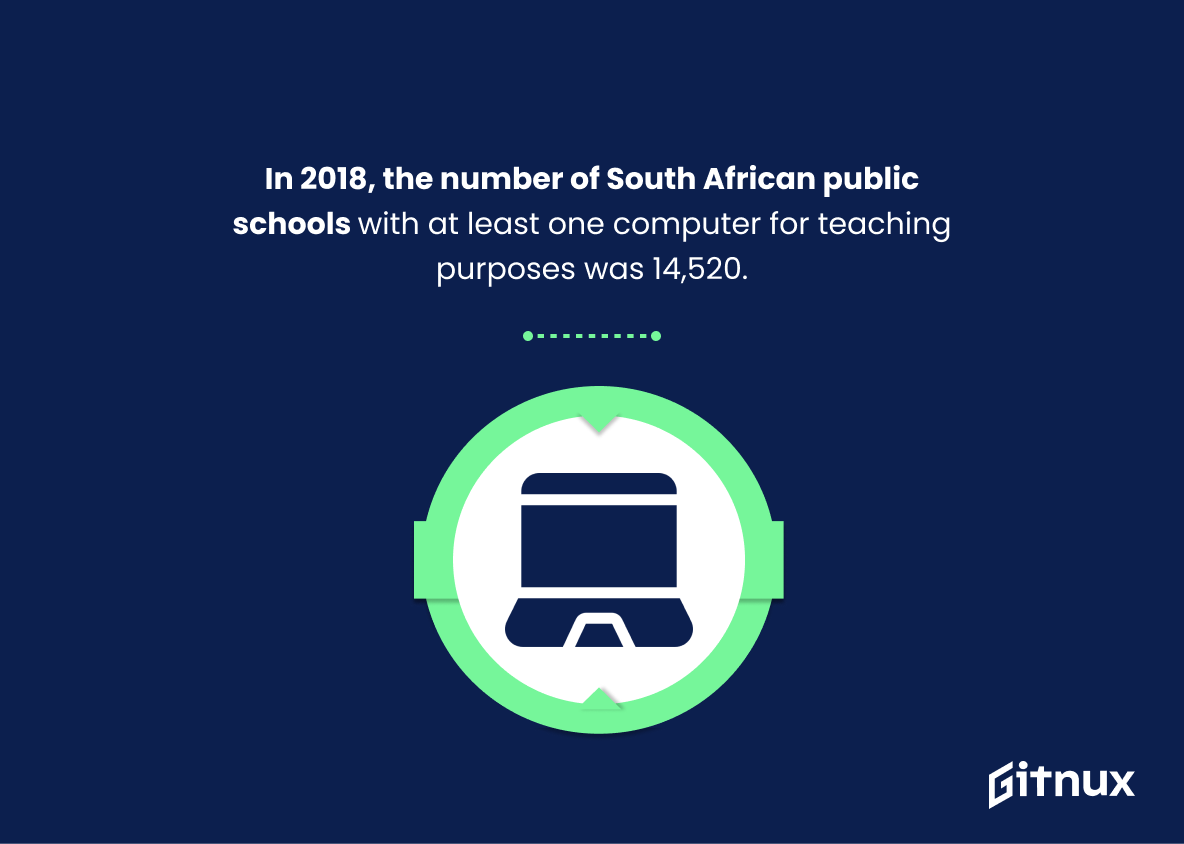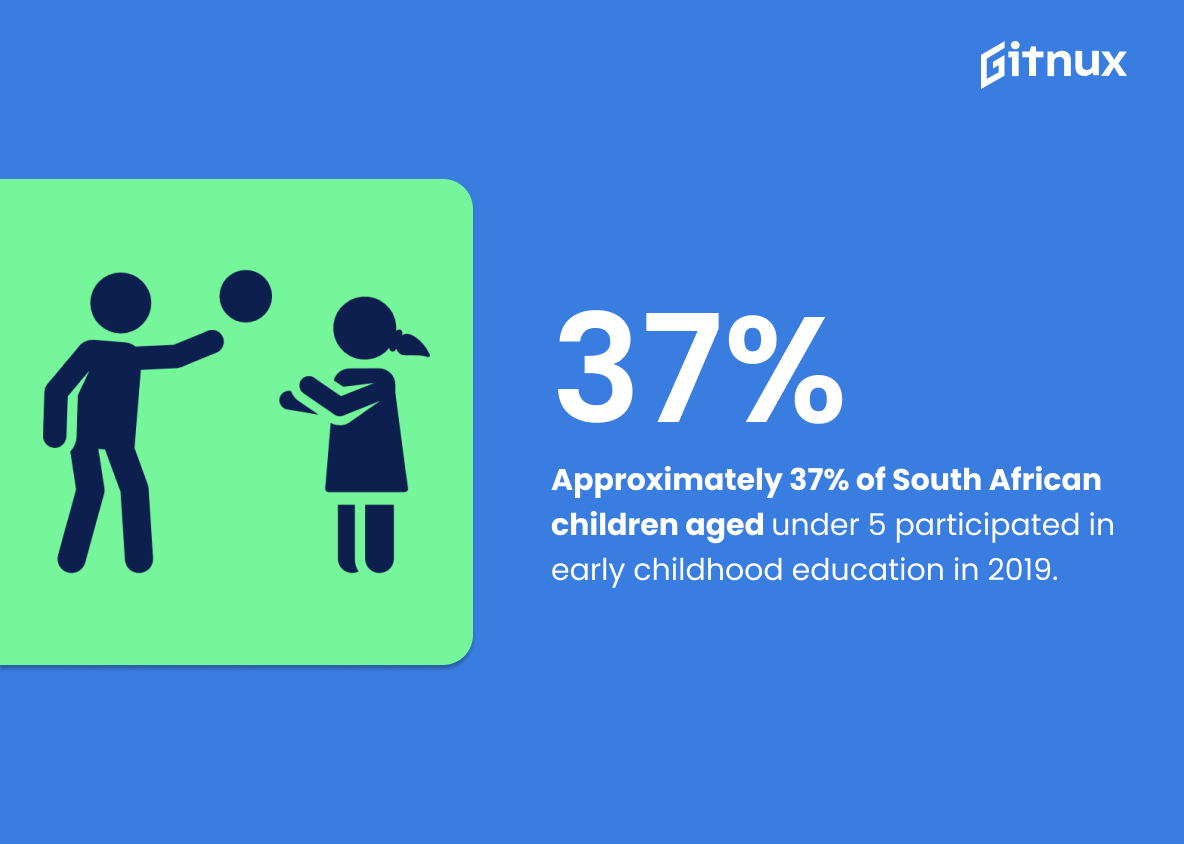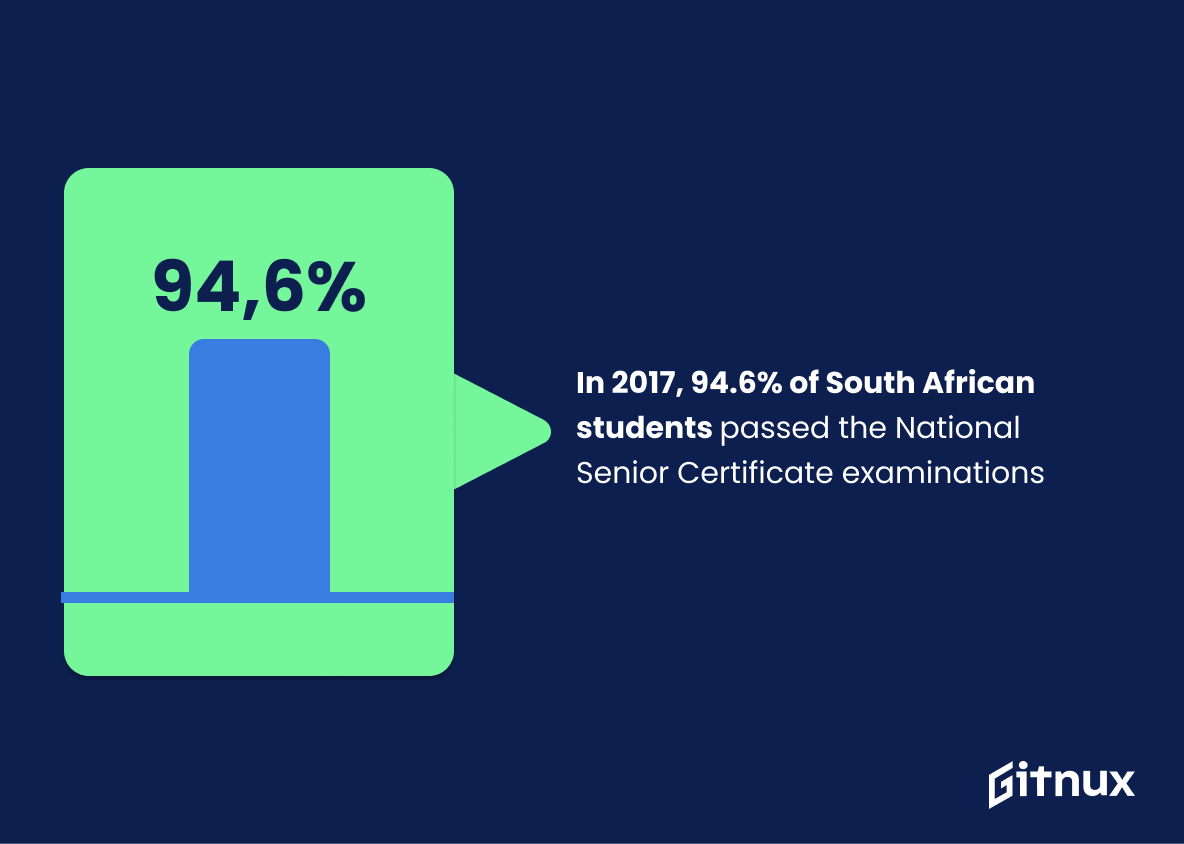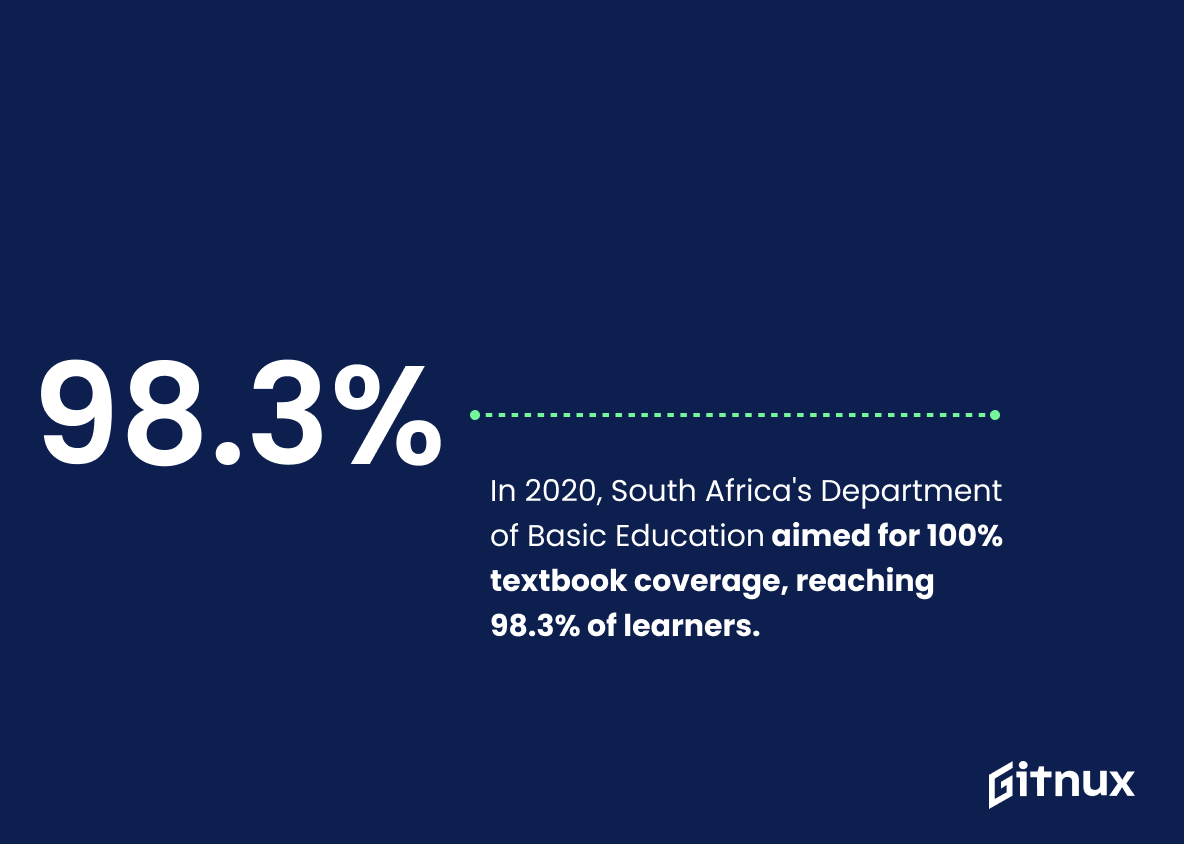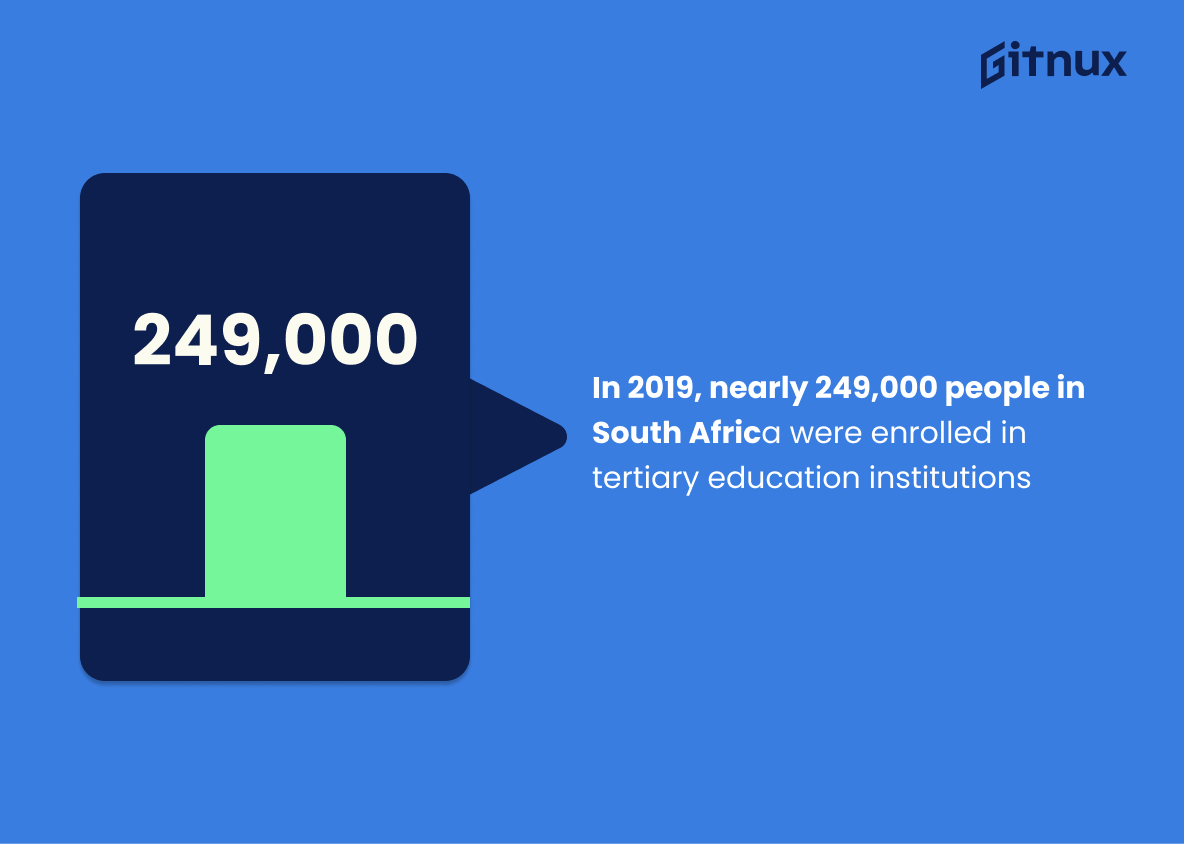South Africa is a country with an ever-growing education system. According to the World Bank report from 2020, South Africa has a literacy rate of 94.37%. In 2019, primary school enrollment was 98.57% of the primary school-age population and secondary school enrollment was 77.52%. The gross primary school enrollment rate for females in 2019 was 101.6%, while it was 101.1% for males that same year. 45.49% of high school students passed their math exams in 2019 and 19
South Africa Education Statistics Overview
Secondary school enrollment in South Africa was 77.52% in 2018.
This statistic is a telling indication of the state of education in South Africa. It reveals that the majority of South African children are enrolled in secondary school, suggesting that access to education is relatively high. This is an encouraging sign for the future of South African education, as it suggests that the country is making progress towards providing quality education to its citizens.
In 2019, 45.49% of South African high school students passed the math exams.
This statistic is a telling indication of the state of South African education. It highlights the fact that more than half of the high school students in South Africa are not passing their math exams, which is a worrying sign for the future of the country’s educational system. It is a reminder that there is still much work to be done in order to ensure that all students have access to quality education and are able to succeed in their studies.
South Africa allocated 19.3% of the total government budget expenditure to education in 2019.
This statistic is a telling indication of the importance South Africa places on education. By allocating 19.3% of the total government budget expenditure to education, South Africa is demonstrating its commitment to providing quality education to its citizens. This is an important factor in the overall success of the country’s educational system.
Approximately 10.9% of South African teachers in 2018 reported not having received enough training.
This statistic is a stark reminder of the lack of resources and support available to South African teachers. It highlights the need for more investment in teacher training and development, as well as the need for better access to resources and support for teachers. It also serves as a warning that without adequate training, South African teachers may not be able to provide the best possible education to their students.
In 2018, the number of South African public schools with at least one computer for teaching purposes was 14,520.
This statistic is a telling indication of the progress South Africa has made in providing its students with access to technology in the classroom. It shows that the country is making strides towards modernizing its educational system and providing students with the tools they need to succeed in the 21st century. This is an important step in ensuring that South African students are able to compete in a global economy.
Approximately 37% of South African children aged under 5 participated in early childhood education in 2019.
This statistic is a telling indication of the state of early childhood education in South Africa. It reveals that a significant portion of the country’s youngest citizens are not receiving the educational opportunities they need to thrive. This is a concerning figure, as early childhood education is essential for laying the foundation for future success in school and beyond.
Unemployment among university-educated South Africans was estimated at 7.1% in 2017.
The statistic of unemployment among university-educated South Africans being estimated at 7.1% in 2017 is a telling indication of the state of South African education. It speaks to the fact that despite the investment in higher education, the job market is not providing the necessary opportunities for university-educated South Africans to find gainful employment. This is a worrying trend that needs to be addressed in order to ensure that South African education is producing the desired outcomes.
About 40% of South African grade 1 learners received some kind of pre-school education in 2016.
This statistic is a telling indication of the importance of pre-school education in South Africa. It shows that a significant portion of the country’s grade 1 learners have already had some kind of educational experience before entering the formal school system. This suggests that pre-school education is seen as an important part of the educational process, and that parents and educators are taking steps to ensure that children are well-prepared for the challenges of formal schooling.
In 2017, 94.6% of South African students passed the National Senior Certificate examinations.
This statistic is a testament to the hard work and dedication of South African students, as well as the effectiveness of the education system in the country. It is a clear indication that South African students are capable of achieving great success in their studies, and that the education system is providing them with the necessary tools to do so. This statistic is an important one to consider when discussing South African education statistics, as it shows that the country is making progress in providing quality education to its citizens.
As of 2018, the South African government provided school feeding schemes for over 9.2 million children.
This statistic is a testament to the South African government’s commitment to providing quality education to its citizens. It shows that the government is taking steps to ensure that children have access to nutritious meals while attending school, which can help them stay focused and perform better academically. Furthermore, it demonstrates that the government is investing in the future of the country by investing in its children.
South Africa’s spending on education as a percentage of GDP was 5.8% in 2019.
The statistic of South Africa’s spending on education as a percentage of GDP in 2019 is a telling indication of the country’s commitment to education. It speaks volumes about the priority South Africa places on education and the resources it is willing to allocate to ensure its citizens have access to quality education. This statistic is an important factor in understanding the state of South Africa’s education system and the progress it has made in recent years.
In 2020, there were approximately 55,000 students enrolled in South African private schools.
This statistic is a telling indication of the state of South African education. It highlights the fact that a significant portion of students are enrolled in private schools, suggesting that the public school system is not meeting the needs of the population. This statistic is a reminder that there is still much work to be done to ensure that all South African students have access to quality education.
In 2020, the Department of Basic Education provided textbooks to 98.3% of the South African learners striving to reach 100% coverage.
This statistic is a testament to the Department of Basic Education’s commitment to providing South African learners with the resources they need to succeed. It shows that the department is making progress towards its goal of 100% coverage, and that it is taking the necessary steps to ensure that all learners have access to the materials they need to learn. This is an encouraging sign for the future of South African education, and a reminder that the department is dedicated to providing quality education to all.
In 2019, nearly 249,000 people in South Africa were enrolled in tertiary education institutions.
This statistic is a telling indication of the progress South Africa has made in terms of tertiary education. It shows that the country is making strides in providing access to higher education, which is essential for the development of a well-educated and skilled workforce. This statistic is a testament to the commitment of the South African government to invest in the education of its citizens, and it is a positive sign for the future of the country.
Conclusion
The data presented in this blog post paints a comprehensive picture of the state of education in South Africa. The literacy rate is high, with 94.37% of people being literate according to a World Bank report from 2020. Primary school enrollment was 98.57%, and secondary school enrollment was 77.52%. High school students passed math exams at 45.49%, while 10.9% reported not having received enough training as teachers in 2018; however, 14,520 public schools had at least one computer for teaching purposes that same year which could help improve teacher training opportunities and student learning outcomes alike..
In 2019, 37% of children aged under 5 participated in early childhood education programs while 40% received some kind of pre-schooling prior to grade 1 entry the previous year (2016). Unemployment among university-educated South Africans was estimated at 7.1 %in 2017 and 9 million children were provided with government funded feeding schemes by 2018 – an indication that access to basic needs are met before educational attainment can be achieved or improved upon . Education expenditure accounted for 19 .3 %of total government budget expenditure ,while spending on education as percentage GDP stood at 5 .8 %in 2019 ; 55000 students enrolled private schools whilst 83 higher institutions existed within country boundaries during 2020 period . Finally 249 000 individuals were enrolled tertiary level studies during 2019 academic calendar – indicating increased demand quality higher learning facilities across nation’s provinces
Overall it appears that there has been significant progress made towards improving educational standards throughout South Africa over recent years despite certain challenges still existing such as lack adequate teacher training resources available or low pass rates amongst high school mathematics examinations However given current trends it seems likely these issues will continue addressed future thus allowing further improvements take place both primary secondary levels study
References
0. – https://www.www.treasury.gov.za
1. – https://www.nicspaull.com
2. – https://www.www.publishwhatyoufund.org
3. – https://www.www.isasa.org
4. – https://www.pmg.org.za
5. – https://www.worldpopulationreview.com
6. – https://www.data.worldbank.org
7. – https://www.www.statssa.gov.za
8. – https://www.www.education.gov.za
